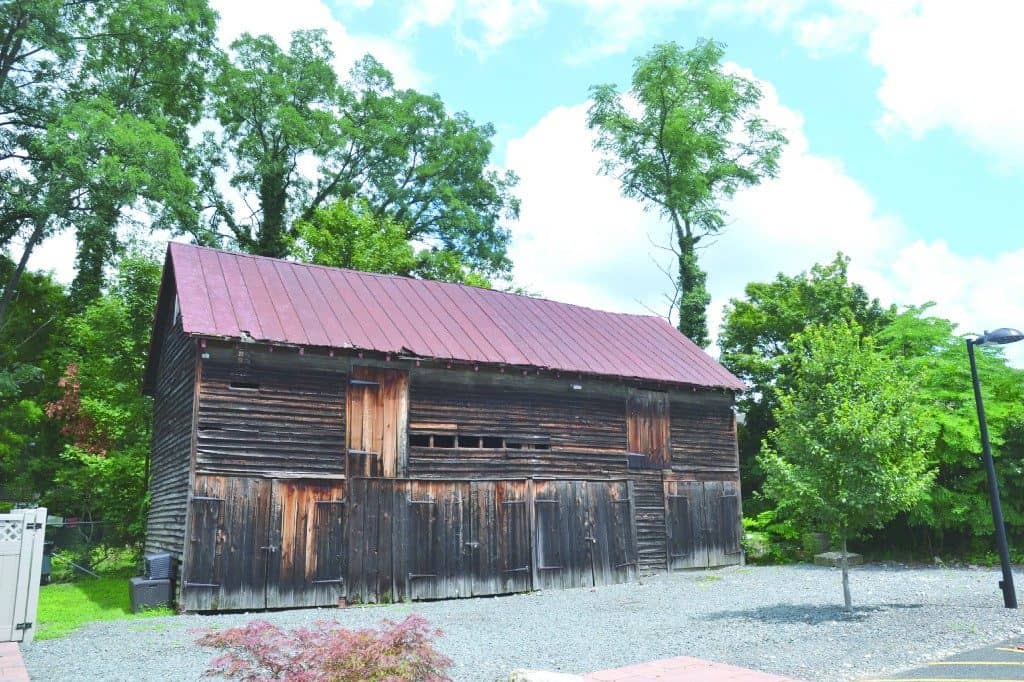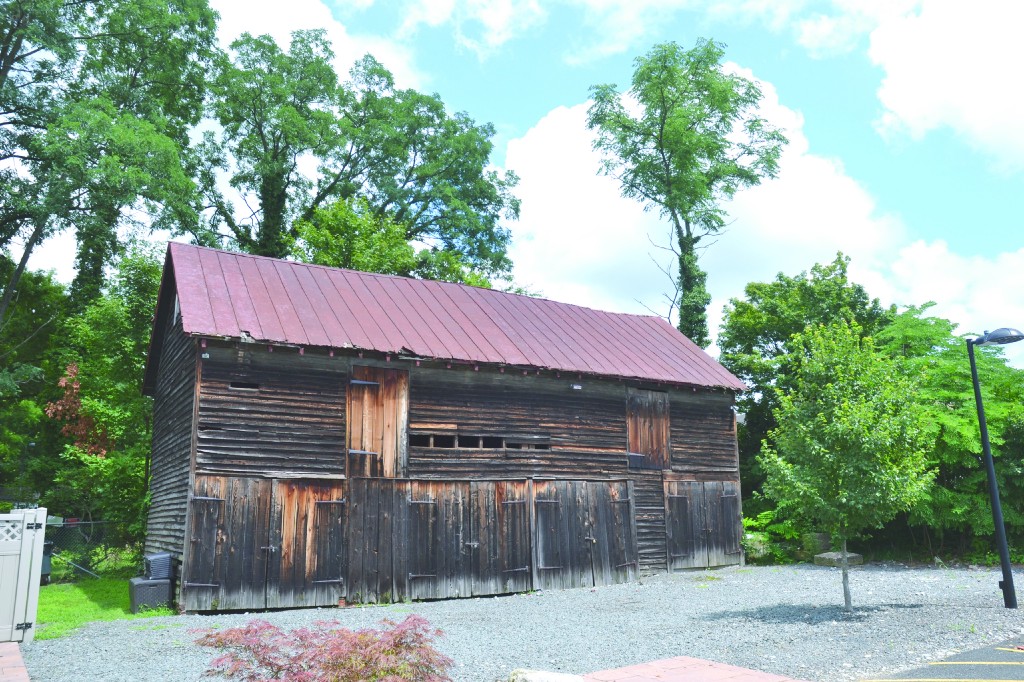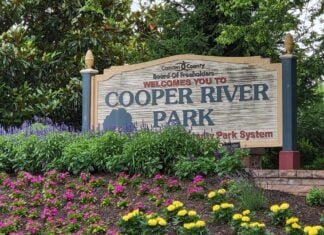
Alfred Driscoll is trying to move and restore the Burr Barn.

In July, the Historical Society of Moorestown issued a call to the community to help save a historic barn dating back to the 1800s, which has been quietly tucked away just off Main Street behind the Burr House. In August, Alfred Driscoll answered that call.
Driscoll’s proposal to save one of Moorestown’s historic barns was accepted by the Historical Society, and if all goes according to plan, the barn could be disassembled and transported to his 2nd Street home as soon February. Driscoll is fundraising to help finance the move, and his hope is that his fellow residents are equally eager to help him save a piece of Moorestown history.
Driscoll plans to restore the barn and turn into a work space for his whole family while maintaining as much of the barn’s historic integrity. As an avid car collector, the barn’s two center bays will house two of his cars while the rightmost bay will house his mechanical supplies, and the leftmost bay will hold his wife’s gardening supplies. On the second floor, Driscoll wants to create a design studio for his two sons who are interested in furniture design and sculpture.
The barn first came on Driscoll’s radar over the summer when the property owner Joseph Ventresca applied for a demolition permit that went to the appearance committee. Having served on the appearance committee for more than a decade, Driscoll said his interest was further piqued when he learned the Historical Society was soliciting proposals to save the barn following the Ventresca’s donating the structure to the historical society as a charitable write off.
Driscoll, an architect, and his wife Haley, an interior designer, sent a proposal to the historical society in late August.
“Moving this barn is about preserving something that contributes to the character, history and quality of life of our town and completely ties in with the mission statement of the Historical Society of Moorestown,” the proposal reads. “This is something that makes perfect sense to us.”
Driscoll said one of the main reasons he and his wife settled in Moorestown was because of the historical nature of the town.
“We can at least do something to help save the character of the town,” Driscoll said. “It’s sort of like we’re tearing down the reason why we moved here in the first place. This is kind of like saving it.”
Leonard Wagner, a member of the Historical Society’s board of Trustees, said when they put the call out for proposals, they didn’t receive very many formal proposals so much as they got a lot of feedback from residents saying what the society should do with the barn — many of which the historical society just didn’t have the resources for.
Wagner said the Driscolls came in with a plan to reuse the barn. From the beginning, the historical society’s goal was to save the barn. Alfred H. Burr was the barn’s original property owner in the 1800s. Wagner said he even received a call from Burr family’s descendents over the summer inquiring what was going to happen to the barn. He said during the course of their conversations, he even learned that Alfred Burr was a relative of Aaron Burr.
In addition to Driscoll’s passion for the project, his home — which is within 200 feet of the barn’s current location — put him at an advantage.
“The biggest thing for us was proximity of Al’s property to the current site,” Wagner said. “He’s so close you could probably walk the boards over there.”
Driscoll was informed his proposal had been selected in September, and in December, Driscoll received bids from two contractors. He said moving the barn requires a couple of phases.
In the first phase, the barn will be disassembled with each piece tagged. Driscoll said the longest piece is only 20 feet long, so when the barn is entirely dismantled, the pieces should only take up the amount of space of one large car or two smaller cars. The pieces will then go into a trailer for transport to his home.
In the second phase, the barn will reassembled in Driscoll’s backyard on top of a concrete foundation he plans to have laid. The barn measures approximately 46 feet in width, and Driscoll’s backyard is approximately 56 feet, so the structure will go almost from property line to property line, he said.
He said his neighbors have been supportive of the idea, with one even offering him their yard to lay out the pieces. He said both he and his adjacent neighbor have deep set yards, so he doesn’t anticipate the barn being an imposing presence in his neighbor’s eyeline.
Driscoll anticipates the structure needing a new roof and siding. He said he plans to save as much of the wood as possible, and for the barn be raised atop a two-feet-tall foundation, which will prevent further damage from water and insects. Driscoll is also considering insulating parts of the barn, so the space can be used year-round.
Driscoll said his original intent was to make the move entirely a community project, but the current property owners expressed concerns about liability issues. For that reason, Driscoll contacted two separate barn moving companies and was quoted at approximately $50,000.
He said financing the project at that steep a cost has proven daunting, so he created a GoFundMe page on Dec. 27 to help fundraise for the project. He said the money that comes in will go to finance the move and to create a maintenance fund for the barn. Any money beyond that would be donated toward saving other historic properties, Driscoll said.
Once the barn is moved and restored, Driscoll said he’s open to the idea of having local elementary schools come visit and learn more about the history of the barn from the Historical Society.
Wagner said he was thrilled to hear Driscoll was open to the idea of letting the public visit the historic structure.
“The fact that there’s that willingness makes us even more enthused,” Wagner said.
For updates on the project, email [email protected] or visit the Burr Barn Facebook page at https://www.facebook.com/The-Burr-Barn-498132230572220/. To donate, visit https://www.gofundme.com/SaveTheBurrBarn.









